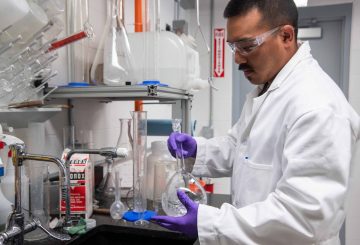뉴질랜드 노스랜드의 한 학교가 정부에 무료 급식 프로그램 축소 계획을 재고할 것을 요청하고 있습니다.Ka Ora, Ka Ako라고 불리는 이 프로그램은 전국에 있는 약 1000개 학교에서 매일 약 23만 명의 학생들에게 서비스를 제공합니다.정부는 다음 달 예산에서 프로그램 자금을 최대 50% 까지 삭감하는 것을 고려하고 있습니다.데이비드 시모어 (David Seymour) 보건부 차관은 이 프로그램의 효과와 납세자를 위한 가치에 의문을 제기했습니다.
황가레이에 있는 티키푼가 고등학교는 세금 감면 가능성에 대해 우려하는 학교 중 하나입니다.이 학교 교장인 엠마 레이랜드 (Emma Leyland) 는 무료 급식이 학생들의 출석률과 행동 습관을 크게 향상시켰다고 말합니다.이 학교는 10년 전부터 건강한 급식을 제공하기 시작했지만 식량을 기부해야 했습니다.2019년부터 Ka Ora, Ka Ako 프로그램을 통해 학교는 모든 학생에게 매일 영양가 있는 식사를 제공할 수 있게 되었습니다.
작년 재무부 보고서에서는 급식을 받는 학교의 성취도나 출석률이 향상되었다는 증거를 찾지 못했습니다.그러나 Leyland는 이 프로그램을 통해 출석률, 성취도, 행동 및 관계 개선 등 학교에 엄청난 혜택을 가져다 주었다고 말합니다.그녀는 또한 이 프로그램이 높은 생활비로 어려움을 겪고 있는 가정에 도움이 되었으며 어린이들의 학교 진학을 장려했다고 언급했습니다.
13학년 학생인 아메아 월딩-킹 (Aamea Walding-King) 은 많은 어린이들이 학교 급식을 하루 식량의 주 공급원으로 삼는다고 말했습니다.또 다른 13학년 학생인 카이안 버트 (Kaian Burt) 는 공동 식사를 통해 학생들이 자신의 일을 되돌아보고 친구들과 어울릴 수 있는 기회도 얻을 수 있다고 말했습니다.
헬스 연합 아오테아로아 (Health Coalition) 아오테아로아 사무국장 페이 랭던 (Faye Langdon) 은 특히 빈곤율이 높은 지역에서 어린이들이 공짜 점심을 통해 학교에 다니고 성과를 달성할 수 있다고 말했습니다.그녀의 단체는 이 프로그램을 유지할 뿐만 아니라 확대할 것을 촉구하는 26,000명의 서명을 모았습니다.
반면 시모어는 매일 10,000개의 점심이 낭비되고 있으며, 이 프로그램을 통해 학교 출석률이나 성취도가 향상된다는 구체적인 증거는 없다고 말했습니다.그는 정부가 학교 급식 프로그램의 비용 효율성을 개선하기 위해 최선을 다하고 있다고 덧붙였습니다.Seymour는 다가오는 예산에서 학생과 납세자 모두에게 혜택을 주는 프로그램을 발표할 예정입니다.
Ka Ora, Ka Ako 프로그램은 학생들이 가장 큰 사회경제적 장벽에 직면하고 배고픈 상태로 학교에 도착할 가능성이 가장 높은 학교를 대상으로 합니다.노스랜드에서는 115개 학교의 약 18,000명의 학생들에게 이 프로그램을 제공합니다.학교는 점심을 직접 만들거나 외부 공급업체와 계약할 수 있습니다.




























































